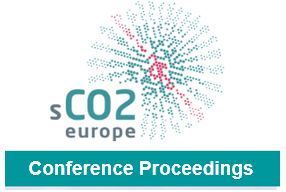Analysis of the potential of CO2 based mixtures to improve the efficiency of cogenerative waste heat recovery power plants
The waste heat potentially available from a wide range of industrial processes still represents a significant fraction of the primary energy consumption related to the processes.
Some of the most energy intensive processes can be categorized in the iron, steel and glass production, the fine chemical industry, and the production of non-ferrous materials such as cement, polymers, paper or in the textile industry. Of the overall thermal energy rejected in the environment, a part of it is feasibly exploitable from a technical and economical point of view in waste heat recovery plants. This work proposes innovative solutions for waste heat recovery cycles working with sCO2 cycles and transcritical cycles adopting CO2-mixtures. As the heat rejection from these cycles is non-isothermal, these power plants are particularly suitable to be used in CHP configuration, therefore transferring heat to a stream of pressurized water at high temperature, up to 200°C.
When a waste heat source available at 450°C is considered, assuming a stack temperature of 125°C, the proposed sCO2 power cycle can convert around 12% of the thermal input in electricity and 87% in useful heat above 60°C, while a cycle working with the CO2+Acetonitrile mixture can deliver 15.5% of the thermal input in electricity while still recovering the remaining more than 80% in useful heat above 60°C.
CO2 based mixtures are therefore suggested for power cycles in CHP configuration to reach nominal electric efficiencies higher than sCO2, avoiding the consumptions of natural gas to produce the same amount of electricity and heat with separated systems.
Some of the most energy intensive processes can be categorized in the iron, steel and glass production, the fine chemical industry, and the production of non-ferrous materials such as cement, polymers, paper or in the textile industry. Of the overall thermal energy rejected in the environment, a part of it is feasibly exploitable from a technical and economical point of view in waste heat recovery plants. This work proposes innovative solutions for waste heat recovery cycles working with sCO2 cycles and transcritical cycles adopting CO2-mixtures. As the heat rejection from these cycles is non-isothermal, these power plants are particularly suitable to be used in CHP configuration, therefore transferring heat to a stream of pressurized water at high temperature, up to 200°C.
When a waste heat source available at 450°C is considered, assuming a stack temperature of 125°C, the proposed sCO2 power cycle can convert around 12% of the thermal input in electricity and 87% in useful heat above 60°C, while a cycle working with the CO2+Acetonitrile mixture can deliver 15.5% of the thermal input in electricity while still recovering the remaining more than 80% in useful heat above 60°C.
CO2 based mixtures are therefore suggested for power cycles in CHP configuration to reach nominal electric efficiencies higher than sCO2, avoiding the consumptions of natural gas to produce the same amount of electricity and heat with separated systems.
Vorschau

Zitieren
Rechte
Nutzung und Vervielfältigung:
Dieses Werk kann unter einer Creative Commons Namensnennung 4.0 Lizenz (CC BY 4.0)
Creative Commons Namensnennung 4.0 Lizenz (CC BY 4.0)
genutzt werden.
